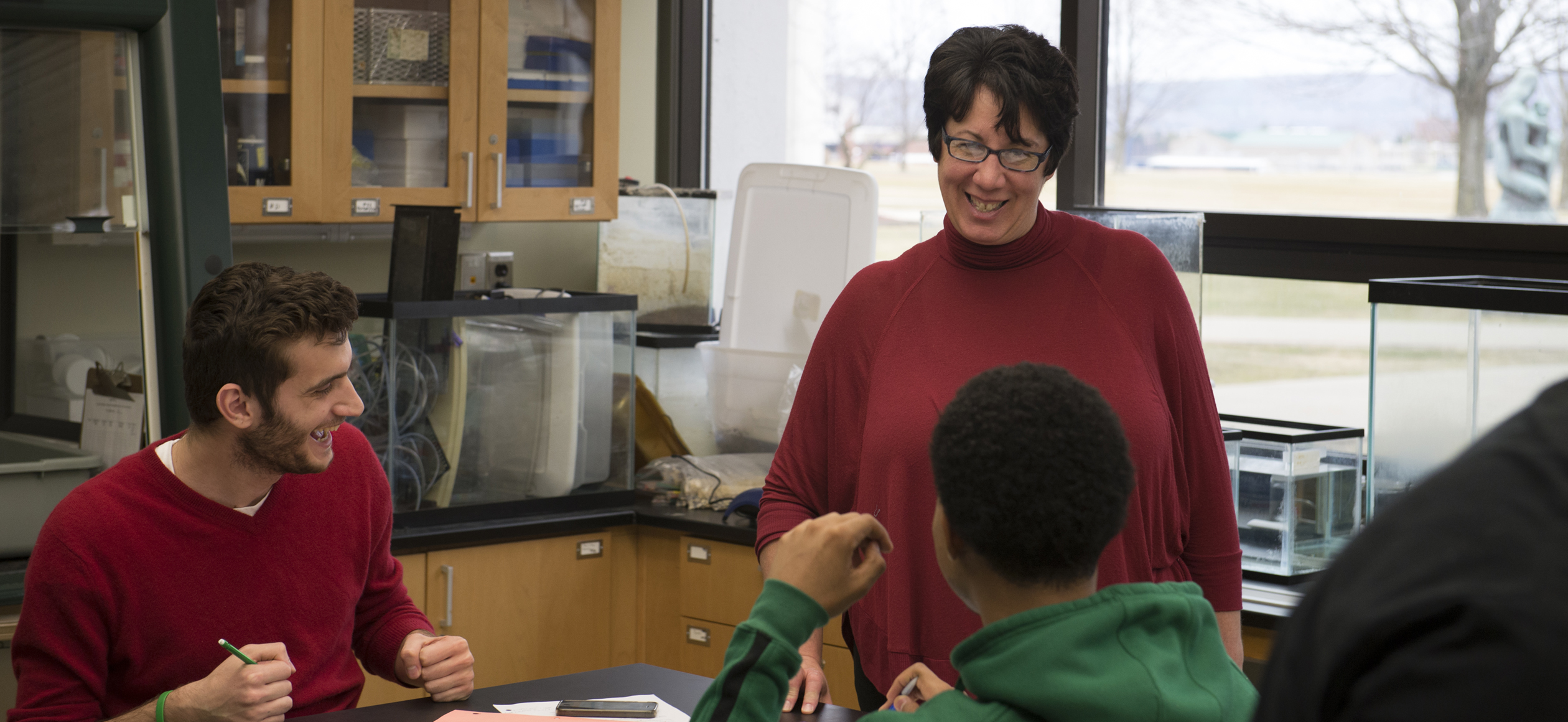Fall 2015 Asa Gray Seminar Series
September 28th, 2015
Julia C. van Kessel, Ph.D., Assistant Research Scientist, Department of Molecular and Cellular Biochemistry, Indiana University, Bloomington, IN.
Title: Quorum-Sensing Gene Regulation in Vibrios
Abstract: Quorum sensing is a method of cell-cell communication that allows bacteria to sense and respond to changes in the population density of their environment. Bacteria use quorum sensing to control processes that are more beneficial when performed by a group acting together, such as virulence factor production, biofilm formation, antibiotic production, competence, and bioluminescence. In vibrios, quorum-sensing gene expression is controlled by the master transcription factor LuxR, which controls >600 genes, including those that produce bioluminescence. LuxR proteins are classified as members of the TetR superfamily of transcription factors but are unique because they both activate and repress transcription. Our lab is interested in the mechanism by which LuxR controls the quorum-sensing regulon. We chose to examine the promoter that drives expression of the bioluminescence genes (luxCDABE). LuxR-mediated transcription activation of the luxC promoter is dependent on nucleoid binding proteins, including the integration host factor (IHF) complex. IHF binding bends DNA and facilitates transcription activation, likely by driving interactions between LuxR and RNA polymerase. IHF appears to be involved in LuxR regulation at other activated promoters. Our findings suggest a general mechanism for quorum-sensing gene regulation coordinated through the concerted activities of the quorum-sensing regulator LuxR and global nucleoid binding complexes.
October 19th, 2015
Ryan Taylor, Ph.D., Associate Professor of Biology, Salisbury University, Salisbury, MD and Smithsonian Tropical Research Institute
Frogs, Bats, and Genes: When Selection Worlds Collide
Male frogs produce vocal advertisement calls in groups called choruses. Females evaluate these calls and select mates based on specific properties of the calls. The group communication, however, results in overlapping male calls and generates high levels of noise that make it difficult for females to evaluate potential mates. One strategy that females could employ to counter this problem is the use of a visual cue - the expansion of a male’s vocal sac. This likely improves females’ ability to discriminate among males in the chorus, much like human lip reading at noisy parties. In a series of two-choice behavioral tests in the túngara frog, we demonstrated this, but then show that at high levels of background noise, this system may break down. An additional problem faced by male túngara frogs is predation from bats. The fringe-lipped bat uses both passive listening and echolocation to find and capture frogs, thus eavesdropping on the males’ sexual signals. In a series of choice experiments, we demonstrated that like the frog, bats also use the movement of male vocal sacs to improve their ability to locate males within the chorus. Male frogs are therefore faced with conflicting evolutionary demands of finding mates and avoiding predators.
November 2nd, 2015
Priscilla Van Wynsberghe, Ph.D., Assistant Professor of Biology, Colgate University, Hamilton, NY.
Title: Suppression of Exploding Worms: The regulation and role of lin-42 in C. elegans development
Abstract: Small RNAs, called microRNAs, regulate development in multiple organisms by inhibiting gene expression. Mis-expression of the highly conserved let-7 microRNA causes death by explosion in C. elegans and has been associated with several human cancers. My lab studies how small RNAs and the proteins that control their expression regulate development. We have recently shown that the period protein homolog LIN-42 regulates the expression of many microRNAs including let-7 to ultimately suppress the lethal phenotype of let-7 mutant worms. Current work in my lab is investigating how LIN-42 expression is controlled and how LIN-42 impacts germ line development.
November 16th, 2015
Frank E. Visco, O.D., M.S., Practicing Optometrist, Syracuse, NY.
Title: The Eye, The Brain, the Pulfrich Effect
Abstract: The Pulfrich effect is a visual illusion that causes a laterally-moving, two-dimensional image, such as a swinging pendulum, to appear take on an elliptical orbit in three-dimensions. This lecture will explore the neural components of the eye, their connections to the brain and how we can fool the brain into seeing something that isn't really there.
November 30th, 2015
Stephen J. Glatt, Ph.D., Associate Professor of Psychiatry and Behavioral Sciences, Associate Professor of Neuroscience and Physiology, SUNY Upstate Medical University, Syracuse, NY.
Title: Biomarkers for Neuropsychiatric Disorders
Abstract: Neuropsychiatric disorders are among the most complex and disabling disorders known to man. Unlike for other medical disorders such as cancer or cardiovascular disease, we do not yet have a solid grasp on the fundamental pathobiology of most neuropsychiatric disorders, and thus we also lack laboratory-based methods for detecting and diagnosing them; this in turn delays treatment and hinders recovery. In this seminar, Dr. Glatt will discuss his most recent research in pursuit of blood-based genomic biomarkers for schizophrenia, bipolar disorder, autism spectrum disorders, post-traumatic stress disorder, and other neuropsychiatric disorders.

